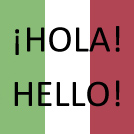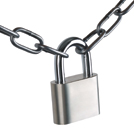|
Mexico City, Mexico
 Value Added Tax
Value Added Tax
➤ Mexico City's VAT, which is called IVA, is 16 percent.
➤ VAT refunds may be available, but the process for obtaining them varies by your country of origin.
➤ Temporary import bonds and ATA Carnets may be used to avoid some taxes.
 Voltage
Voltage
➤ Mexico uses 120 volts.
➤ Most outlets are two prong, but adapters for three-prong plugs are readily available.
➤ Bring surge protectors and voltage regulators.
 Garbage
Garbage
➤ Show organizers handle trash during installation.
➤ Exhibitors must order booth-cleaning services and dispose of their own build-and-burn properties.
 Cellphones
Cellphones
➤ International roaming may be the easiest option, but it can be expensive. Make sure you understand all roaming and data fees.
➤ Disposable phones and prepaid SIM cards are widely available.
 Shipping
Shipping
➤ Truck shipments take two weeks, and airfreight can take 24 hours.
➤ Plan two weeks for customs clearance. Categorize and document every item in a shipment, even paper clips and cleaning rags, to avoid delays and penalties.
➤ Some items need special permits for entry, and obtaining those can take up to six weeks.
➤ A show's official freight forwarder is often the best choice. Or, get advice from an international partner.
➤ Your freight forwarder should have local agents in Mexico City and extensive experience shipping goods there.
 Payment
Payment
➤ Bank wire transfers are preferred, though credit cards may be accepted for large purchases and at exhibit houses.
➤ Only use credit cards with trusted vendors.
➤ Some vendors offer discounts for advance full payment in cash. Using cash for on-site payment provides a negotiating tool.
 Emergencies
Emergencies
➤ Dial 066 for police and 080 for fire and medical emergencies.
Greetings and Culture

➤ Long handshakes or hugs and cheek kisses between friends are typical greetings. Shake a woman's hand only if she offers it.
➤ Latin Americans prefer to do business with friends, so allow ample time to make casual conversation.
➤ Mexicans tend to require little personal space.
➤ Address individuals formally, using their professional titles and last names unless asked to do otherwise.
➤ Handwritten notes are very meaningful, especially as a follow-up contact.
➤ Female exhibitors may have a difficult time establishing credibility in the business community.
Hospitality

➤ Most large exhibitors provide a variety of traditional snacks such as churros (fried sweets), empanadas (turnovers), or tortas (sandwiches), as well as beverages.
➤ Alcohol (typically beer, whiskey, wine, and tequila) is commonly served at trade shows, but it's rare at others. To be safe, ask show organizers for guidance on the matter.
➤ Full meals are often served for meetings and VIP visitors.
➤ Small exhibits usually offer beverages at a minimum.
➤ Hospitality lounges are very common, sometimes comprising the entire upper deck of an exhibit.
➤ Some convention centers require all food and drink to be provided by in-house caterers.
➤ Off-site client dinners and social parties are typical. Dinners can be lengthy and often start after 8 p.m. Being late is common and completely acceptable in this laid-back culture.
➤ Pay checks in advance to avoid disagreements over the restaurant bill.
Language

➤ Most people speak some English, but having a local translator is wise.
➤ Graphics and business cards should be printed in English and Spanish.
Staff Attire

➤ Attire is formal, with men typically wearing suits (with or without ties) and women wearing dresses or skirted business suits that have modest necklines and hems.
➤ High heels and flashy jewelry are common on the trade show floor.
Installation and Dismantle

➤ Skill levels vary among workers, and being listed in the show manual is not necessarily an indication of vendor quality. So find vendors familiar with U.S. exhibit standards, and vet them through a quality-screening organization such as ExhibitMatch LLC.
➤ Few workers speak English, so have bilingual on-site supervision during installation and dismantle. Exhibit managers should monitor the build schedule and construction quality.
➤ Labor must be hired in advance, as there are no labor pools at venues in Mexico City.
➤ Exhibit houses generally contract laborers for you and charge flat-rate rather than hourly fees.
➤ Power is typically provided only during trade show hours, so if your exhibit requires 24-hour power, you must request additional electricity. Power-supply delays are common and require persistent order requests. Ask for written confirmation of your electricity order.
➤ Fire and safety regulations are minimal as compared to U.S. shows, though restrictions vary by event.
➤ Petty theft on the trade show floor is a concern.
➤ Exhibitors may build side walls to the maximum height all the way to the aisle.
General Facts and Tips

➤ Never hail a cab from the street or get into a waiting cab that a hostess or concierge has not called for you, as tourists have been kidnapped by fake cab drivers. Hire a driver through a trusted source.
➤ If not met by a private driver at the airport, only use the official taxi station inside the airport to arrange transport. And keep an eye on your bags.
➤ Due to safety concerns, only walk to very nearby destinations; otherwise, travel via private vehicle, not public transportation.
➤ Traffic congestion is extreme. For safety, keep car windows up and doors locked.
SOURCES
Irene Albarran, CEO, Expoquarzo SA de CV; Argelia Calderon, project manager, Grupo Escato; Aida Cardenas, CEO, Rigoletto Services; Alejandro Escalante, president, Omega Group; Eleonora Garcia Farrel, special project coordinator, Promexico; Jeffrey Hannah, president, Gielissen Interiors and Exhibitions; Ed Kelley, CEO, World Trade Center Mexico City; Kelli Steckbauer, director of global business, MG Design Associates Inc.; Jeannine Swan, owner, Global Exhibit Management; Lorena Troxell, senior project manager, Gielissen Interiors and Exhibitions
|









 ➤ Long handshakes or hugs and cheek kisses between friends are typical greetings. Shake a woman's hand only if she offers it.
➤ Long handshakes or hugs and cheek kisses between friends are typical greetings. Shake a woman's hand only if she offers it.  ➤ Most large exhibitors provide a variety of traditional snacks such as churros (fried sweets), empanadas (turnovers), or tortas (sandwiches), as well as beverages.
➤ Most large exhibitors provide a variety of traditional snacks such as churros (fried sweets), empanadas (turnovers), or tortas (sandwiches), as well as beverages.  ➤ Most people speak some English, but having a local translator is wise.
➤ Most people speak some English, but having a local translator is wise.  ➤ Attire is formal, with men typically wearing suits (with or without ties) and women wearing dresses or skirted business suits that have modest necklines and hems.
➤ Attire is formal, with men typically wearing suits (with or without ties) and women wearing dresses or skirted business suits that have modest necklines and hems.  ➤ Skill levels vary among workers, and being listed in the show manual is not necessarily an indication of vendor quality. So find vendors familiar with U.S. exhibit standards, and vet them through a quality-screening organization such as ExhibitMatch LLC.
➤ Skill levels vary among workers, and being listed in the show manual is not necessarily an indication of vendor quality. So find vendors familiar with U.S. exhibit standards, and vet them through a quality-screening organization such as ExhibitMatch LLC.  ➤ Never hail a cab from the street or get into a waiting cab that a hostess or concierge has not called for you, as tourists have been kidnapped by fake cab drivers. Hire a driver through a trusted source.
➤ Never hail a cab from the street or get into a waiting cab that a hostess or concierge has not called for you, as tourists have been kidnapped by fake cab drivers. Hire a driver through a trusted source.


